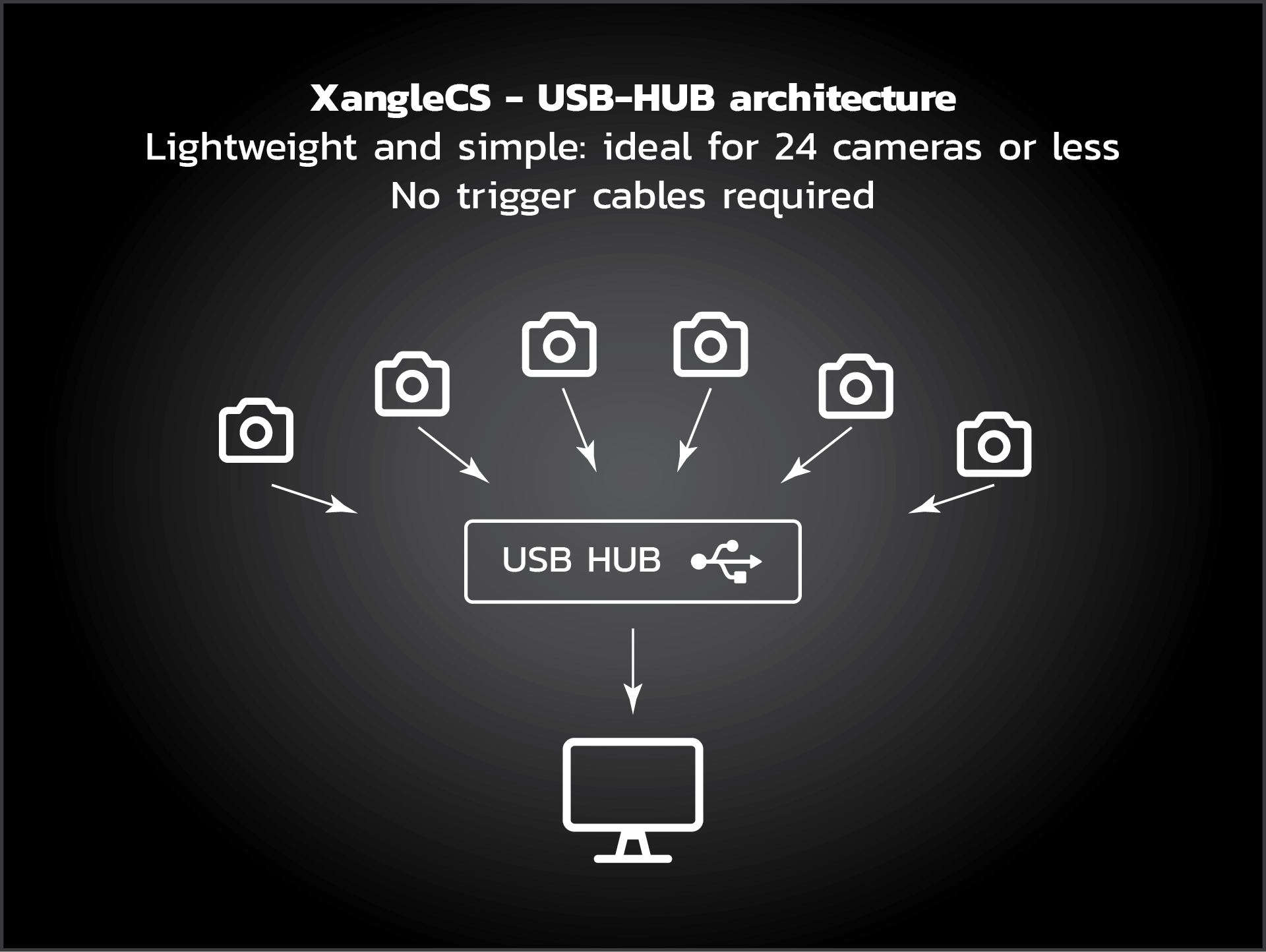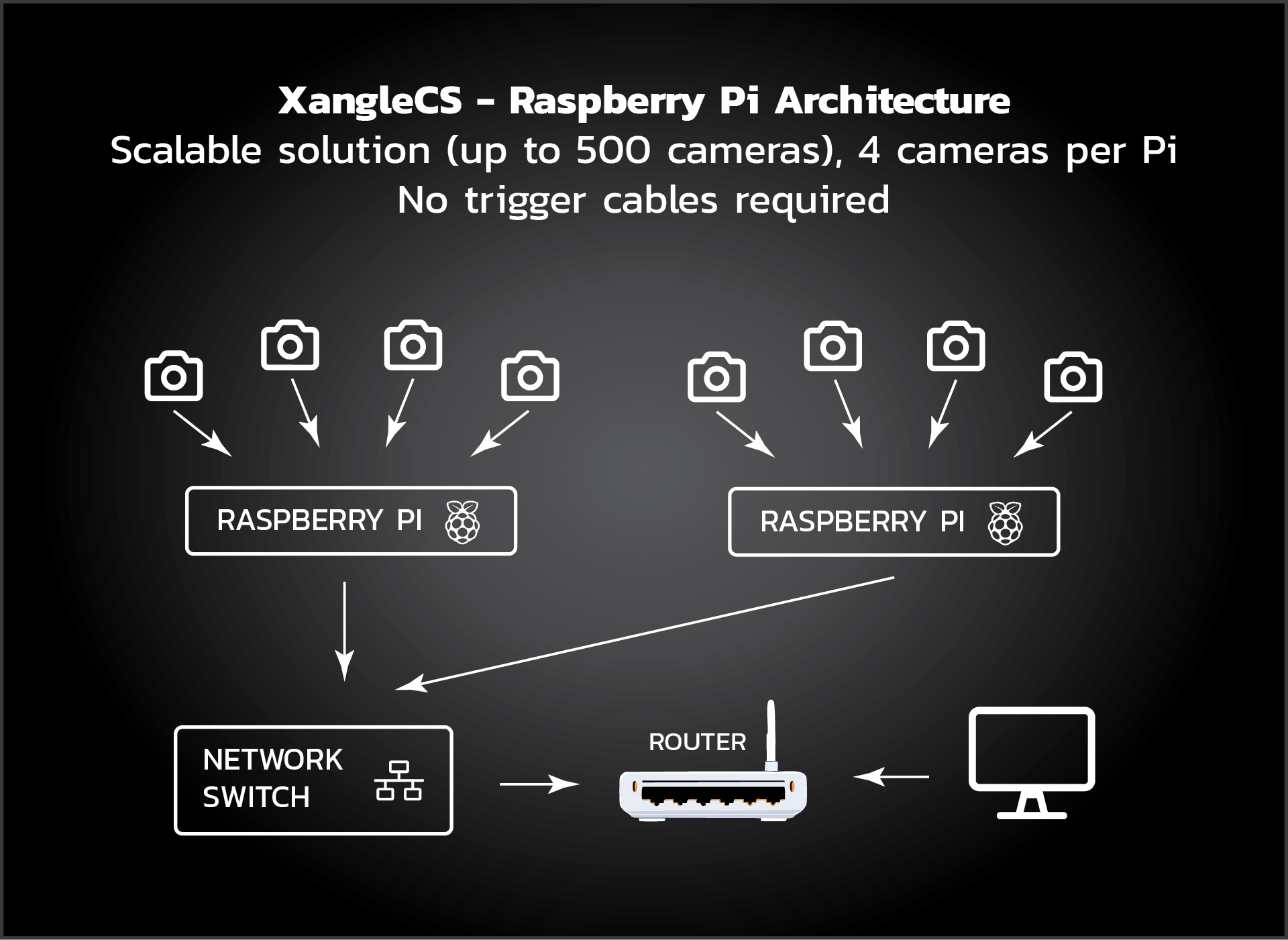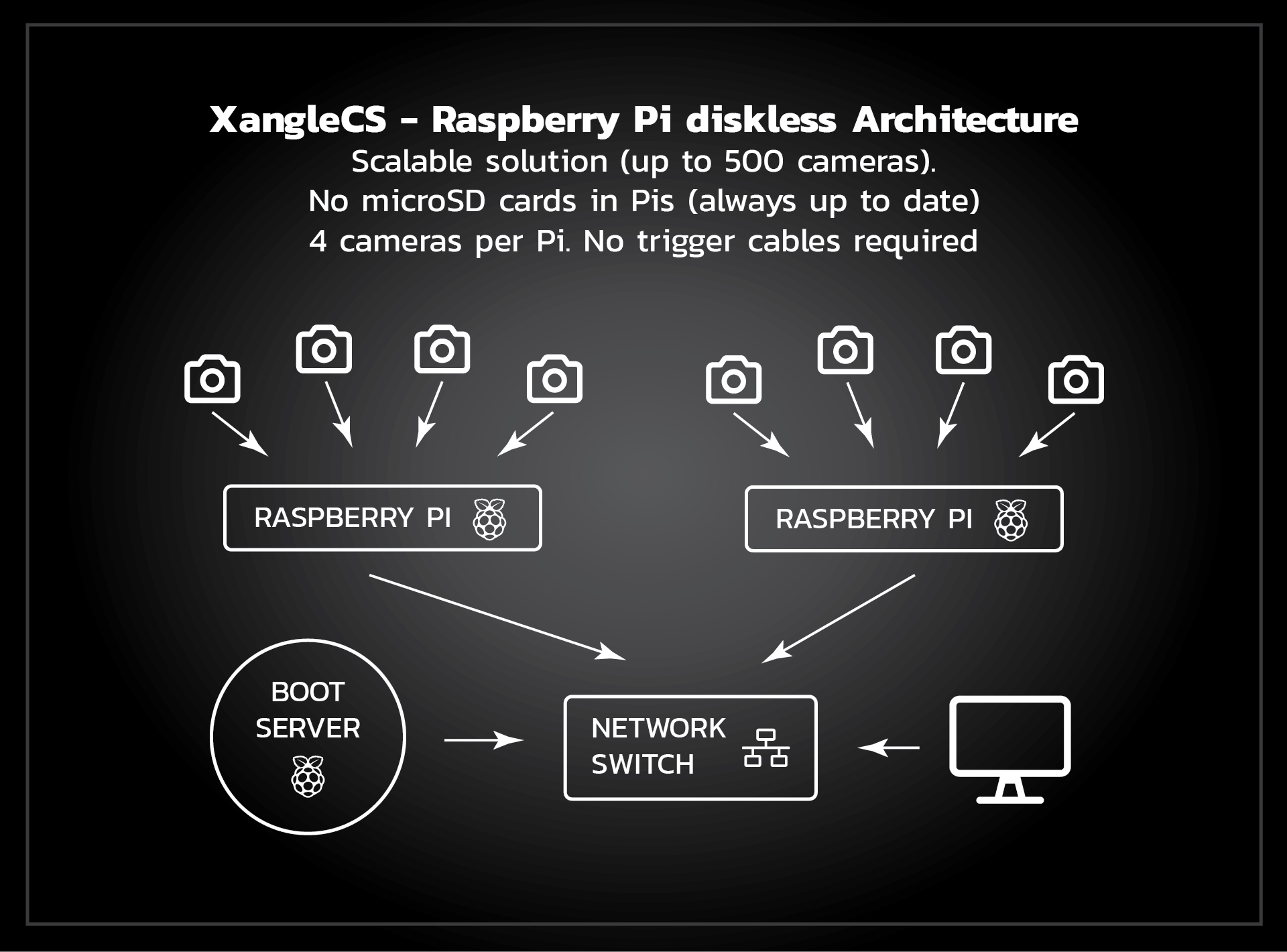
What’s required?
We tested pretty much any configuration you can think of. This is the optimal equipment for multi-camera work!
Multi-camera gear list
Gear list for bullet-time, photogrammetry or gaussian splat multi-camera work using Xangle Camera Server
This is the recommended equipment list to run our solution and this is exactly what we use at the studio and during our events. Many other items can be used instead of what’s listed below, but you’ll play safe if you go with what we suggest
Checkout our budget calculator to help you with the approximate investment required for a specified number of camera (Raspberry Pi architecture)
Request a trial version or purchase a license on our online store (instant download after payment is completed)
Architecture A: USB-HUBS
Minimal setup, as seen in the bullet-time tutorial. Ideal for 24 cameras or less. This list is for 6 cameras
One Windows 10 PC computer (with at least 1x USB3 ports or one USB-C port)
*Optional: One Router (needed to create a local network for your sharing and replay stations)
* Optional: One powerpoint wireless presenter. https://amzn.to/2ppBlrD or https://amzn.to/2QfzhRA (requires the “blackout” button to work)
** NEW! You can now get my basic kit fully ready to roll
Architecture B: Rasbperry Pis (24+ cameras)
4 sets of 6x ball head
6x 16gb C10 microsd cards (get two packs of this one: https://amzn.to/4mPPVDl) **NEW: get pre-flashed cards from our online store.
One calibration bar (bullet-time only)
Optional: One powerpoint wireless presenter. https://amzn.to/2ppBlrD or https://amzn.to/2QfzhRA
One Windows 10 PC computer with an ethernet port: https://amzn.to/2PXPVG5
Architecture C: Diskless Rasbperry Pis (24+ cameras)
4 sets of 6x ball head
7x Raspberry Pi’s (7th one for the boot server)
1x 16gb C10 microsd card (boot server).
One calibration bar (bullet-time only)
Optional: One powerpoint wireless presenter. https://amzn.to/2ppBlrD or https://amzn.to/2QfzhRA
One Windows 10 PC computer with an ethernet port: https://amzn.to/2PXPVG5. You’re going to need one additional ethernet adapter if you need to connect to a local network
What to choose between the USB-HUBs, Raspberry Pis or Diskless Raspberry Pis?
12 cameras or less: No brainer — use USB hubs. It’s the simplest option.
Between 12 and 24 cameras: It depends. Raspberry Pis will give you faster download speeds across all cameras, especially if you’re shooting in RAW. However, this comes with the added complexity of setting up a network and managing the Raspberry Pis.
24 cameras or more: Raspberry Pis all the way. It’s simpler than it sounds. Just flash the microSD cards, insert them into the Pis, and you’re done. No configuration needed: no IP addresses to assign, nothing to tweak. This is how we've been running our 100+ camera rigs since 2016.
Diskless Pis? That’s our latest addition, and it’s quite amazing. You only need to boot each Pi once with the same microSD card. Once done, your pi can be ran from the network and will always be up to date. Use an additional Pi as a boot server that provides the operating system to all other Pis. Full instructions here: https://doc.xanglecs.com/raspberrypi
Bullet-time vs photogrammetry / gaussian splat
The equipment is the same no mater the output type. But for bullet-time, you’re also going to need a calibration bar, either from us, or a DIY version of it
Additional equipment
Camera power: here’s what I recommend (please don’t run on battery!): https://doc.xanglecs.com/Powering-up-your-cameras-faa85977c9df4307a697e3c6f097dab0
USB Cables: we’ve been having a couple of issues in the past with the usb cables that come with the Canon cameras. In any case, you’ll want to use angled-connectors / high quality usb cables (shielded) as you’re going to have a lot of electronic components packed in a small area. We’ve been using Startech cables for a while and they are absolutely perfect. Choose the right side for the elbow angle (right angle for SL1, left angle for SL2): https://amzn.to/31tYACb. For the EOS-R, EOS-RP, G7x Mark III and G5x Mark II, a simple elbow adapter is enough. Full frame: https://amzn.to/31oEUPY, Powershot: https://amzn.to/31oL8iP
Request a trial version or purchase a license on our online store (instant download after payment is completed)


